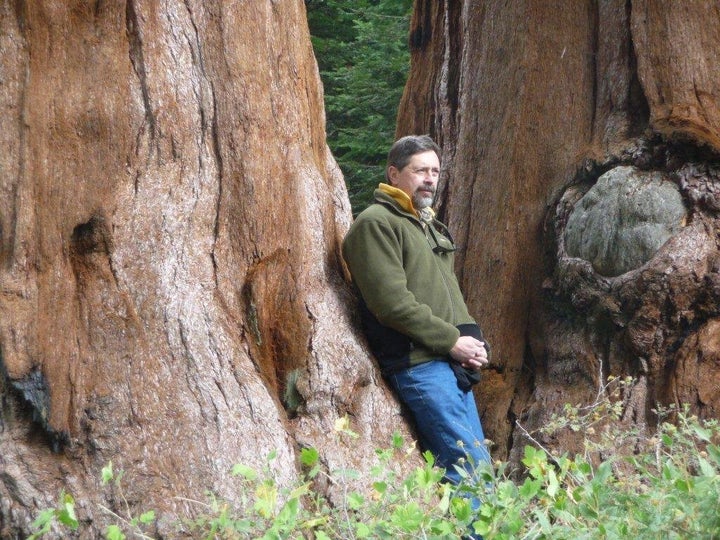
In 2001 I wrote a story for the Science section of the New York Times about a northern Michigan shade tree farmer named David Milarch who was planning to clone the largest tree of North America's iconic species, from the oaks to the redwoods, to protect the genetics of those big, old trees.
For most people climate change was a far off threat, but Milarch took it seriously and worried that America's biggest and best specimens -- the Champion Trees -- were being allowed to die and tip over, and their genes disappear. One day, he thought, those libraries of "proven survivor" genes might be important to future forests as the climate grew more uncertain.
A year later Milarch came to Montana to plant a champion tree on the lawn of Montana's capitol. During his visit the beefy former bodybuilder and competitive arm wrestler told me a wild story - the idea of cloning the trees came to him after he had a Near Death Experience, went through the tunnel of light and on to a heavenly landscape. After he returned, spirit beings came to him, he said, and told him the big old trees needed to be cloned.
Despite this unusual genesis, a half dozen scientists and people involved with tree planting all told me the same thing - it makes absolute sense to clone the largest tree of every species to protect them. Science has done a poor job with trees, and doesn't know much about them. So until the research is done, protect the genetic library.
The trees across the country are in trouble as never before. They are dying all around us in the American West. I came to realize what climate change can do to trees when bark beetles, their season lengthened by unusually warm winters, attacked trees on my 15 acres of pine forest in Montana. The first year, in 2003, they killed a few big old trees. By the fourth year they had spread unchecked to nearly every tree and killed more than 95 percent of our forest.
Then there's the bristlecone pines, the oldest trees in the world. These gnarled, wind-whipped trees survive by adapting to harsh, mountain top terrain, where little else, including their enemies, could live. That's changed as the planet warms, and mountaintops are warming faster than anywhere else. The bristlecones are under assault from bark beetles and an exotic fungus, and scientists believe all will die in the not too distant future. When survivors like these start dying it's time to pay attention.
The other part of this story is that trees are far more vital to the human endeavor than we know. We've vastly underestimated the trees and forests, and the role they play in sustaining life. Governments use a term called "critical infrastructure" which refers to such things as transportation systems and electrical generation, which are needed for the function of society. I think of trees as "critical ecological infrastructure" because they are not just part of the scenery, but vital to maintaining life on the planet. Think of them as a kind of sophisticated eco-technology.
It's well known that trees sequester Co2, a green house gas which causes climate change. But they also emit water vapor that has been shown to travel many miles and spread a cooling effect, even globally. Trees create wildlife habitat and habitat for insects, the bottom of the food chain. When insects thrive, so do birds and other species.
Their ability to filter is robust. They sweep air pollution out of the air in our cities and suburbs and clean water through their complex root system. Willows and poplars are being used to clean up toxic waste on the landscape, and remove the endocrine disruptors that plague us. In Sweden the town of Enkoping spreads its sewage sludge on a willow plantation which cleans it and uses it for nourishment. Then the willows are harvested and used to generate electricity. The system is far more economical than conventional treatment methods.
One of the great unknowns about trees is the role of their aerosols. Trees emit chemicals that are proven anti-bacterials, anti-fungals and anti virals, and some shown to prevent cancer. Acetysalicylic acid, which is aspirin, is emitted by willow trees around the world into rivers and lakes and the air, and has been shown to prevent a range of cancers as well as heart disease and stroke. Are these emissions a way for nature to maintain the health of the biosphere? It has not been studied.
The list of the services that trees offer is far longer than I can enumerate here, and far more than we know. They do all of these things and self-replicate; what more can you ask? And unless we take care of them we will miss them when they are gone.
Jim Robbins is the author of The Man Who Planted Trees: Lost Groves, Champion Trees and an Urgent Plan to Save the Planet, published by Spiegel & Grau.